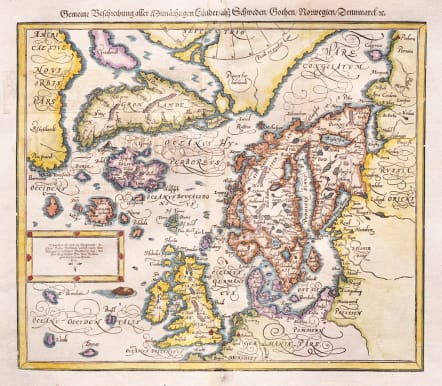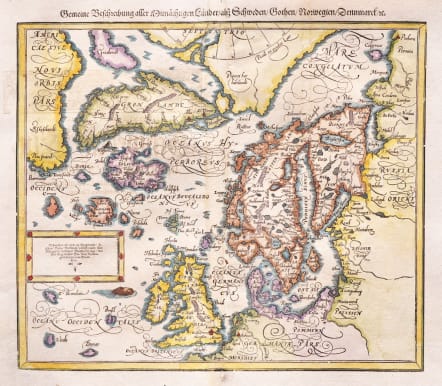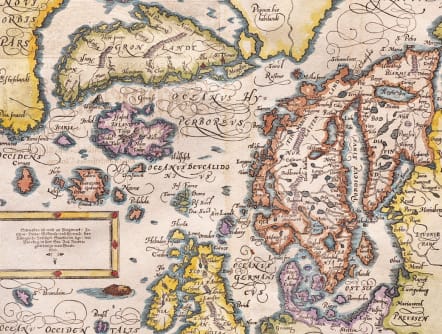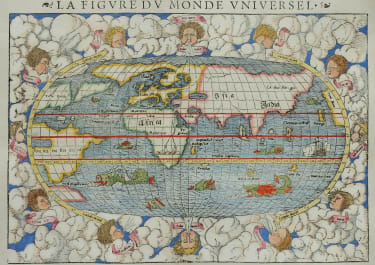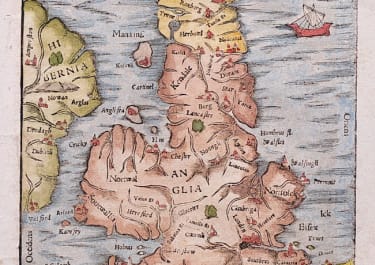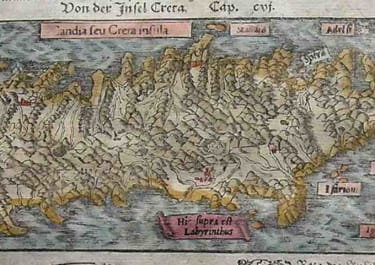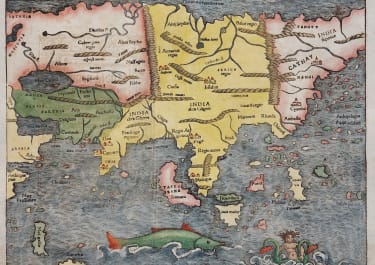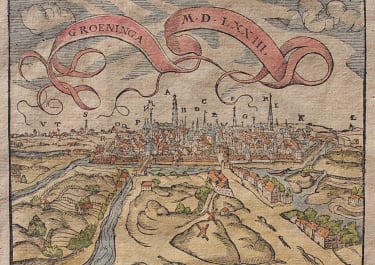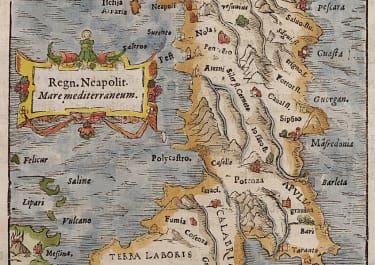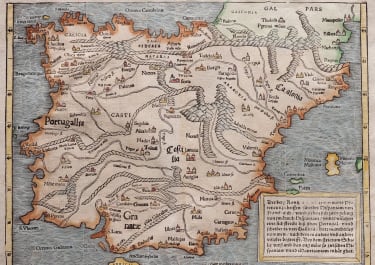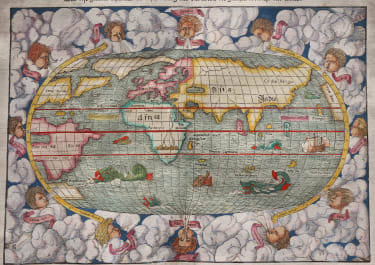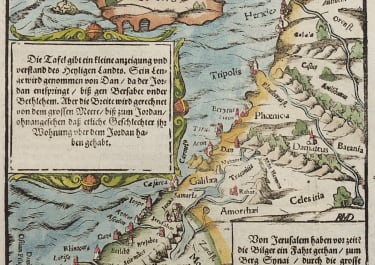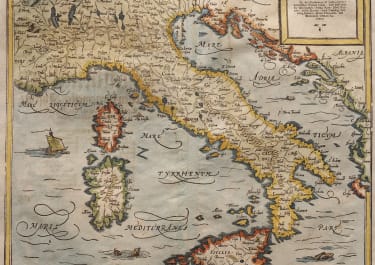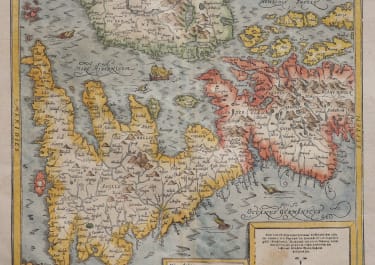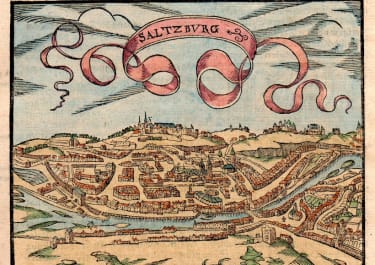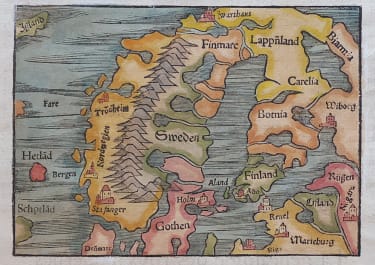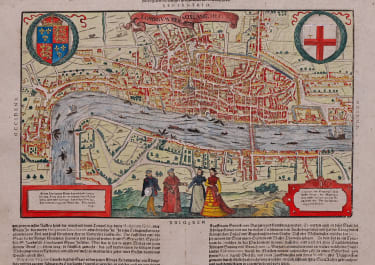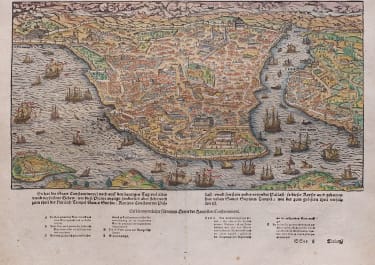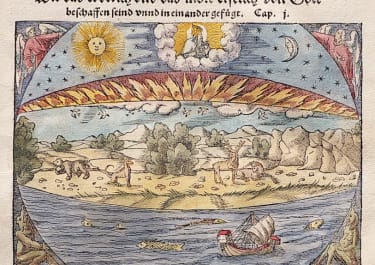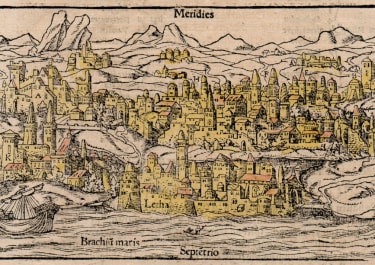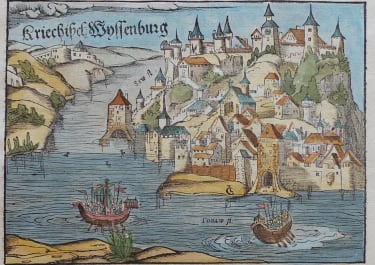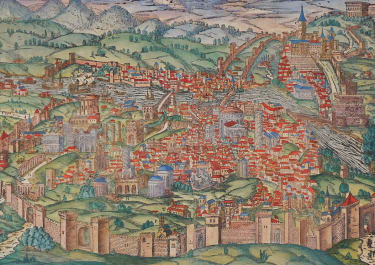GEMEINE BESCHREIBUNG ALLER MITNACHTIGEN LANDER.
£650
Full Title Gemeine Beschreibung Aller Mitnachtigen Lander / alsz Schweden / Gothen / Norwegien / Dennmarc
Highly sought after Munster map.
This attractive woodblock map is based on Ortelius' Septentrionalum of 1573, which in turn was based on the mapping of Nicholas Zeno in 1558. Petri had this woodblock cut in 1588, reverting to coverage of Munster's earlier, simpler map of Schonlandia. The map shows two Greenlands, one just above the other with the name of Groclandt, and the coast of Estotilandt (Newfoundland) is nearby. The imaginary islands of Frisland, Icaria, Podalida, and St. Brendain are shown, along with many other small, phantom islands in the North Sea. The North Pole carries a note of Pigmei hic habitandt, indicating that pygmies live there. Title is above the map. There is also a cartouche containing, "Schweden ist reich an Bergwerck Fischen…"
Excellent hand colour
Excellent condition
Ref: Burden #68.
code : M5405
Cartographer : Sebastian Munster
Date : 1580 Basel
Size : 30.5*36 cms sheet size 37 *44 cms
availability : Available
Price : £650
Originally a scholar studying Hebrew, Greek and mathematics, Sebastian Munster (1489-1552) eventually specialised in mathematical geography and cartography. It was this double ability - as a classicist and mathematician - that was to prove invaluable when Munster set himself to preparing new editions of Solinus’ “Memorabilia” and Mela’s “De Situ Orbis”, two classical descriptive geographies containing maps, and his own two greatest works, the “Geographia” and “Cosmographia”. These reflect the widespread interest in classical texts, which were being rediscovered in the fifteenth century, and being disseminated in the later fifteenth and sixteenth century, through the new medium of printing.
The “Geographia” was a translation of Ptolemy’s landmark geographical text, compiled in about 150 AD., illustrated with maps based on Ptolemy’s calculations, but also, in recognition of the increased geographical awareness, contains a section of modern maps. In the first edition of the “Geographia”, Munster included 27 ancient Ptolemaic maps and 21 modern maps, printed from woodblocks. Subsequent editions of the “Cosmographia” were to contain a vast number of maps and plans.
One consequence of Munster’s work was the impetus it gave to regional mapping of Germany, but Munster was also the first cartographer to produce a set of maps of the four continents on separate maps. Most importantly, through his books (the “Geographia” and “Cosmographia” alone ran to over forty editions in six languages), Munster was responsible for diffusing the most up-to-date geographical information throughout Europe.

